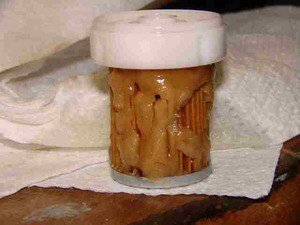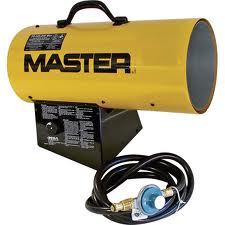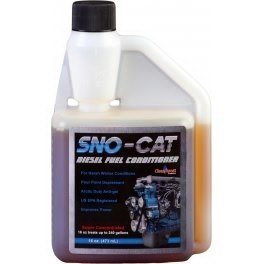How to Fix Gelled Diesel Fuel
“ Diesel fuel gelling is a very common problem for many drivers during the winter season. On our article “How to Prevent Diesel Fuel Gelling”, we talked about the reasons behind fuel gelling, its impact on vehicle performance and how to address it best. There we highlighted the importance of being ready and practicing precautionary measures such as using fuel additives and winter blends. But what if your fuel has already gelled? What are the ways on how to fix gelled diesel fuel? “
 Diesel Fuel Gelling: A Review
Diesel Fuel Gelling: A Review
Diesel fuel gelling is a phenomenon that happens when the paraffin in diesel solidifies because of a drop in temperature. There are two important temperature points that come into play during gelling. First is the cloud point which is the point in temperature where paraffin wax finally begins to precipitate in the fuel. It is during the cloud point when the fuel starts to finally become cloudy. This usually happens at around 32 degrees.
The next is the pour point or gel point. This point is the stage where so much wax has already precipitated that the fuel no longer flows. This happens at around 15 degrees below cloud point.
 How to Fix Gelled Diesel Fuel
How to Fix Gelled Diesel Fuel
You’ll see a lot of tips on how to fix gelled diesel fuel. The easiest way of doing this is to take it to a shop and let it thaw by having it heated. The problem is, not a lot of people have access to shops. Others would also not rather spend additional money on a vehicle service.
For those who are into DIY, there are some ingenious tips on how to fix gelled diesel fuel on their own. The main idea here is to warm a fuel tank. Some people advice putting a propane torpedo heater under the tank and putting bales of hay around the truck to retain the heat. Putting a tarp over the engine as it is being heated is another option.
Another trick involves getting a barrel, cutting off the bottom 4 to 5 inches off then filling it with sand and diesel/kerosene. The next step is to light this up and use as a source of heat. The flame is almost non-existent and ideally won’t get past the barrel’s side. However, keeping an eye on it is still recommended.
While these recommendations may prove useful and effective to some, they are not entirely recommended by professionals because of the risk that comes with them. If you are ever going to practice them, always remember to do them with precaution.
 How to Fix Gelled Diesel Fuel with Fuel Additives
How to Fix Gelled Diesel Fuel with Fuel Additives
The second most recommended option of dealing with gelled fuel is to use an additive. Not only are they cost-effective and recommended; you can easily use them on your own as well.
Let’s say your problem isn’t only gelled fuel but also gelled fuel lines, fuel filters, and injector rails. You also have no extra filter to replace them with. Applying a quality fuel additive/conditioner would solve this problem. For the next step-by-step, we will illustrate how to fix gelled diesel fuel using CleanBoost® Sno-Cat™.
Steps on How to Fix Gelled Diesel Fuel
1. Pour enough dosage of Sno-Cat™ into the fuel tank. A good ratio is roughly an ounce to every 10 gallons of fuel remaining in the gelled tank. Using this much is usually not needed if you only want to prevent your fuel from gelling. However, this case is considered a more severe one because your fuel has already gelled. Take note that you need to have at least 2-4 ounces of the product left for the next step.
2. Remove the frozen diesel fuel filter and pour Sno-Cat™ directly on the filter element. Do the same to the filter housing as well. You will now start to hear the filter lines crack as the product starts to thaw these components.
3. Replace the filter element and housing and prime the diesel fuel system as recommended by the manufacturer. Wait for 30 minutes for Sno-Cat™ to work around the injector rails then start the engine afterwards.
Using fuel additives are a very easy answer to the question about how to fix gelled diesel fuel. At the end of the day, however, always remember that preventing the gelling of your fuel in the first place is much more important and useful. You can easily do this by using winter blends and priming your fuel beforehand with a fuel conditioner like Sno-Cat™.
For more information about the product, click here.
Want an even quicker solution to thaw gelled diesel fuel in an emergency? Read on to learn what to do in emergencies.
About the Author
Tech Guy
Automotive enthusiast, passionate about Jeeps, hot-rods, turbos, performance, efficiency, diesels, fuels, high performance oils, additives and anything with an engine.


